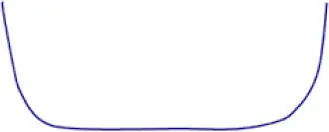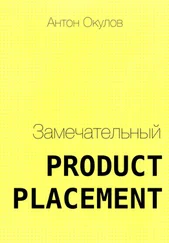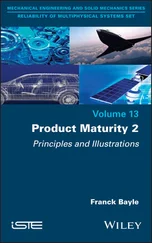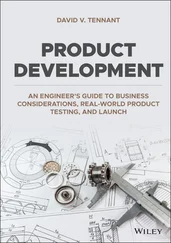In order to understand the problem of system maturity as a whole, before addressing the actual techniques used, it is necessary to put it in context. This context is provided by the quality standards for the systems.
Having trained as a general engineer within the Department of Energy and Environmental Engineering (GEn) at INSA Lyon, I then gained experience as a quality specialist, and have been a dependability supervisor since 1989. Franck therefore asked me to present the standards environment and the links that tie it to maturity, which the reader will find in Chapter 2of this book.
Serge ZANINOTTI
Thales
Quality Expert November 2021
This book would certainly not have been possible without the contribution of certain persons. I therefore want to thank, first, my main supervisors throughout my career with Thales: Jean Riaillon, Laurent Portrait and Claude Sarno, who gave me the means to gain this experience.
For everything related to maturity, a special thank you goes to Serge Zaninotti, quality expert with Thales, and also the author of Chapter 2on the notion of maturity and the “quality” aspects, and Serge Parbaud of Thales for his advice and always appropriate corrections. I would also want to extend my warmest thanks to Patrick Carton from Thales Global Service for the passionate technical exchanges we have had in recent years, his always apt remarks, his support and his listening.
Furthermore, I wish to thank Franck Davenel from DGA for our exchanges during PISTIS upstream study related to accelerated tests and burn-in, and to give my warmest thanks to Léo Gerville Réache for his valuable help.
Finally, I wish to thank my entire family, and particularly my wife, not only for bearing with me, but also for encouraging me while writing this book.
Reliability, availability, safety and so on are now major qualities that a product must have, irrespective of the industrial application field (automobile, avionics, rail, etc.) of its use. A significant literature related to these fields can be readily accessed, and is generally grouped under the umbrella concept of “dependability”.
During the whole lifecycle of a product, from specification to operation by the end user, a large number of actions are implemented in order for it to meet the specified requirements. Reliability is the quantitative basis for dependability activities, as poor reliability can lead to insufficient availability, for example, although it should be reached as soon as the products are in service.
The maturity of a product is therefore its capacity to reach the desired reliability level, from its launch into service until the end of its operation. Due to technical and economic challenges, it is very difficult to reach product maturity. Indeed, defects are very often generated during various phases of the lifecycle, reflected by failures that occur very early on in product operation (a manufacturing defect, for example), or during its operation (design flaw, integration flaw, etc.). This is particularly true for products whose service life is becoming longer (e.g. 30 years for components in the rail industry). It is important to note that this activity makes sense for maintained products, which are predominantly in industrial applications.
There is abundant information on maturity, but this applies mostly to process implementation within a company, and it is therefore often at the project management level. Detailed literature describing the main theories (worst-case analysis, derating analysis, etc.) and practical techniques (accelerated tests, burn-in, etc.) for building product maturity is actually scarce, and many manufacturers often use obsolete standards, which, at best, they modify according to their experience.
The main objective of this book is to fill this knowledge gap, which is often detrimental to many manufacturers.
In this book, maturity is defined as the ability of a product to achieve the expected level of reliability from the moment it becomes operational for the end user. A review of what reliability means and a definition of the parameters on which it is based is therefore needed.
Reliability studies the occurrence of failures in time. These instances of failure are random; hence, they cannot be known in advance. This presents a challenge. To model them, we use the concept of random variable, which will be denoted by T throughout this book.
First, it is important to determine the various types of failures. There are three main categories, namely:
– “youth failures”, which generally occur very early on in the lifecycle of a product. Youth failures are generally the result of manufacturing defects. Therefore, they concern only a small part of the population. They can be partially eradicated by specific tests, such as burn-in;
– “catastrophic failures”, which are unexpected, sudden and independent of the time previously elapsed. These types of failures can therefore be observed at any point in the lifecycle of a product. They are generally the result of accidental overloads (heat, mechanical, electrical). They typically do not concern the entire product population and can be reduced by robustness tests, derating rules, etc.;
– “aging” failures, which are observed across all the products in operation. These failures are generally not observed during the lifecycle of a product, with the exception of specific components with a “limited service life” or premature aging, as a result of poor sizing, a batch of defective components, etc. They affect the entire population and therefore must be absolutely pushed beyond the duration of use of the product. Consequently, design rules (derating rules, worst-case analysis, thermal, mechanical, electrical simulation, etc.), and specific aging tests can be implemented.
We begin by addressing intrinsic reliability. Intrinsic reliability refers to the reliability of a component, a card or a product in the absence of any maintenance. In order to estimate this, and in particular to know the type of failure involved, the most widely used parameter is the (instantaneous) failure rate denoted by λ, which is defined by:
[1.1] 
Let us briefly analyze this equation and the following conventions. The term P denotes the “probability” and the symbol “/” stands for “knowing that”. The limit “lim” represents the instantaneous character of the failure rate. Therefore, equation [1.1]can be interpreted as follows:
Probability that the product will fail between “t and t+dt” knowing that it was operational (non-defective) at instant “t”.
To facilitate understanding of the concept of failure rate, the analogy with a human being can be used (Gaudoin and Ledoux 2007). Let us try to estimate the probability that a human being dies between 100 and 101 years of age. This probability is low since the majority of human beings die before they reach 100 years old. Furthermore, let us estimate the probability that a human being dies between 100 and 101 years of age, knowing that they were alive at 100 years old. This probability is high, as human beings do not live long after reaching 100 years of age.
The three failure categories can thus be symbolically represented using the concept of failure rate using the famous bathtub curve, as illustrated in the following figure.

Figure 1.1. Bathtub curve example
Читать дальше














